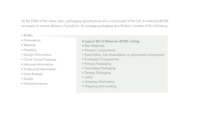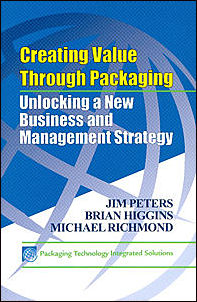No matter what you’re packaging or providing, labeling is an organization-wide business process vital to internal and external operations. From ensuring distribution and logistics is as fine-tuned as possible, to helping control and govern suppliers and production, labeling is not only important but also an often demanding task for any-sized organization. And, as one can imagine, it can become more challenging as businesses grow and should, therefore, never be neglected or left to poorly function with outdated processes or infrastructure.
Labeling is multi-faceted. It consists of many components that need to be considered, including hardware, maintaining accuracy of information, the ability to design labels, and ensuring the correct labels are available to the right departments. Each of these aspects need careful attention for optimal operations.
Industry-specific concerns are often major challenges. For instance, in certain industries like food and beverage packaging, pharmaceuticals or chemicals, accuracy is extra critical and highly regulated. Other challenges arise due to the scale of operations. For example, larger businesses may have a network of international offices and distribution centers, which makes it a challenge to cost-effectively deploy the right labels in multiple languages and regions.
Many other operations, such as accounting or CRM processes, have been updated with cloud infrastructure and other modern improvements. But, unfortunately, the labeling industry has been slow to modernize. However, things have started to change, and the industry is at a point where many new technologies, such as cloud-based label management systems, should be adopted to drastically streamline and simplify operations.
Advancing beyond legacy complexities
For many organizations, outdated legacy labeling processes make the design, printing and distribution of accurate labels more complex and inefficient than it needs to be. It’s not uncommon for many businesses to utilize a myriad of different systems, sprawled across different departments and locations that don’t work in unison.
Additionally, because older labeling systems have required a great deal of technical expertise, current systems may not be user-friendly, which means an over-burdened IT team may need to be called to design a new label or make a simple update. Using a software that requires IT’s assistance for simple tasks will slow down operations and be much more costly than newer systems that requires less technical knowledge.
Improved agility through democratized label management
Centralized label management solutions, made possible by software-as-a-service (SaaS) or cloud infrastructure models, can enable automation and simplify the designing element of the process so that business users can develop templates and print labels in a few hours. This makes enterprises much more agile when processing change requests and creating label templates to onboard new customers or support new products.
Moving to the cloud also democratizes label management by reducing the need to house and maintain expensive, specialized IT infrastructure on-premises. Historically, only larger organizations had the resources and in-house IT skills to deploy such systems. But now, thanks to cloud resources, there are less barriers of entry for those that don’t have the extravagant IT budgets needed for costly hardware investments or extensive operations and maintenance upkeep.
More efficient and effective quality assurance
Beyond ease of use and cost benefits, a digitalized and centralized labeling approach improves quality by eliminating the need for redundant, manual data entry from multiple facilities. With only one version of each label template stored at a central location, maintained via a browser and shared wherever needed, chances of human errors like duplicate entries and mislabeling as well as some problems that arise from latency and other technical issues are reduced. This brings risk down and lowers costs even more.
A digital label management system is also more secure and traceable. This can enable multiple levels of role-based security, so only people with the right access can change label templates or amend data. It can also provide an extensive audit trail, detailing when and where changes were made and labels were printed as well as the people behind those activities. This asset tracking can be key for meeting compliance requirements in regulated industries such as life sciences and food and beverage.
A centralized cloud-based label management system also makes collaboration more efficient. Users can change, store and approve all labels in the same digital location. This benefit enables everyone to access the most recent information from any location – be it in another office across the country or in an affiliate’s location across the globe.
Conclusion
Cloud-based or SaaS systems enable organizations to speedily move past potentially mooring legacy IT solutions and processes into an environment where more people in an organization can easily design and print labels as well as access the most accurate data and right versions from any location. In addition to this improved collaboration, a migration to a cloud-based or SaaS label management system can also offer additional benefits in terms of agility, costs and quality. Because of this, a new, digitalized age of labeling feasibly accessible to businesses large and small is an exciting future for the industry. And, for many, it’s time to quickly and easily move away from outdated legacy IT solutions into a world of consolidated and more efficient modernized label management.


_900x550.jpg?height=200&t=1637162951&width=200)


